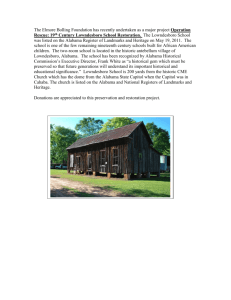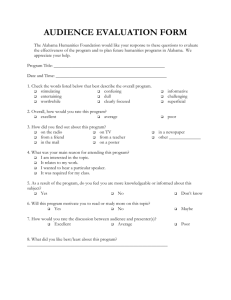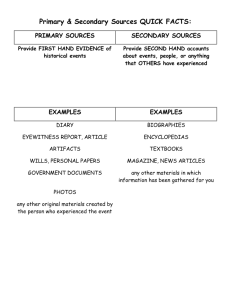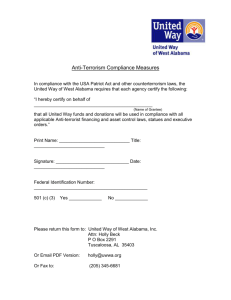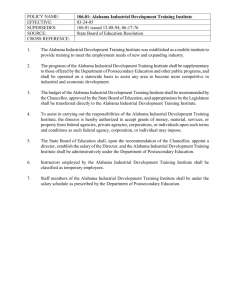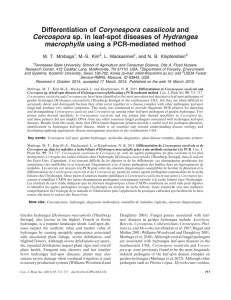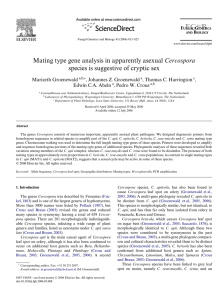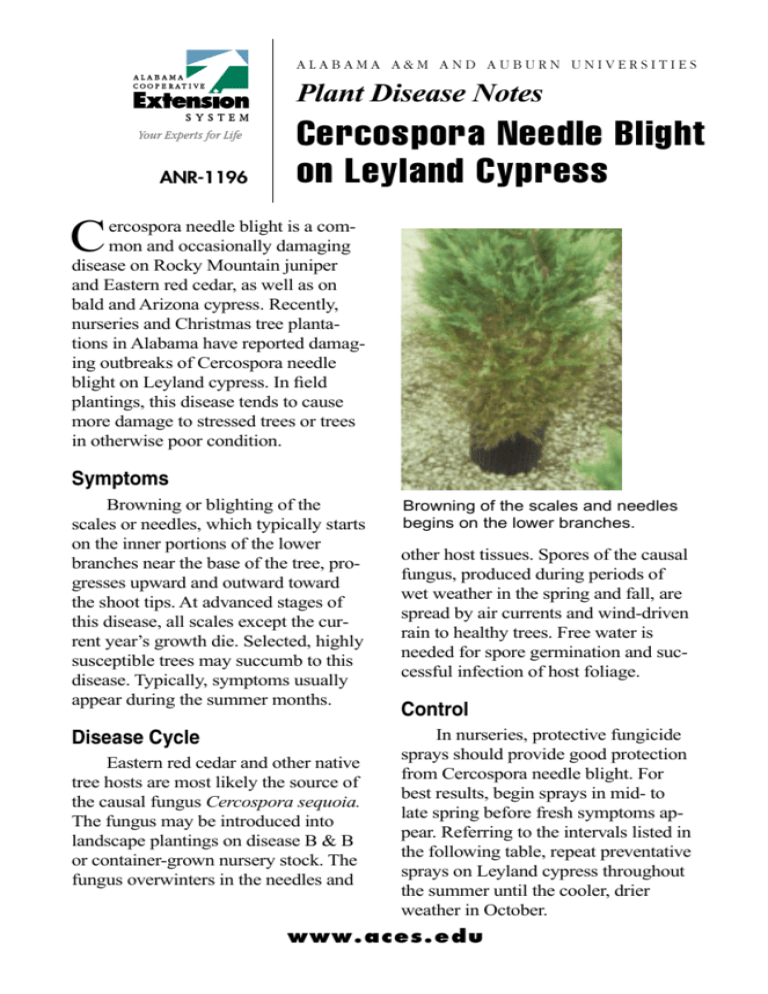
ALABAMA A&M AND AUBURN UNIVERSITIES
Plant Disease Notes
ANR-1196
Cercospora Needle Blight
on Leyland Cypress
C
ercospora needle blight is a common and occasionally damaging
disease on Rocky Mountain juniper
and Eastern red cedar, as well as on
bald and Arizona cypress. Recently,
nurseries and Christmas tree plantations in Alabama have reported damaging outbreaks of Cercospora needle
blight on Leyland cypress. In field
plantings, this disease tends to cause
more damage to stressed trees or trees
in otherwise poor condition.
Symptoms
Browning or blighting of the
scales or needles, which typically starts
on the inner portions of the lower
branches near the base of the tree, progresses upward and outward toward
the shoot tips. At advanced stages of
this disease, all scales except the current year’s growth die. Selected, highly
susceptible trees may succumb to this
disease. Typically, symptoms usually
appear during the summer months.
Disease Cycle
Eastern red cedar and other native
tree hosts are most likely the source of
the causal fungus Cercospora sequoia.
The fungus may be introduced into
landscape plantings on disease B & B
or container-grown nursery stock. The
fungus overwinters in the needles and
Browning of the scales and needles
begins on the lower branches.
other host tissues. Spores of the causal
fungus, produced during periods of
wet weather in the spring and fall, are
spread by air currents and wind-driven
rain to healthy trees. Free water is
needed for spore germination and successful infection of host foliage.
Control
In nurseries, protective fungicide
sprays should provide good protection
from Cercospora needle blight. For
best results, begin sprays in mid- to
late spring before fresh symptoms appear. Referring to the intervals listed in
the following table, repeat preventative
sprays on Leyland cypress throughout
the summer until the cooler, drier
weather in October.
www.aces.edu
Thorough coverage of the foliage is critical to the control of Cercospora needle blight. When spraying, be sure to use enough pressure to force the fungicide
through the canopy to thoroughly wet the innermost shoots, especially those near
the base of the plant. Fungicides cleared for the control of Cercospora leaf spot are
listed in the following table. Note: the information concerning efficacy of fungicides for the control of Cercospora needle blight dates back to the late 1950s and
1960s. No recent efficacy trials have been conducted with any registered fungicides.
Application Rate
Fungicide
Per Gallon Per 100 Gallons Comments
azoxystrobin
1 to 4 ounces
Apply at first sign of
Heritage 50W
disease and repeat
every 14 to 28 days.
myclobutanil
4 ounces
Begin sprays in late spring
Eagle 40WSP
and repeat every 10 to 14
days as needed.
propiconazole
8 to 12 fluid
Apply every 30 days when
Banner Maxx
ounces
conditions favor disease.
thiophanate-methyl 1 1⁄2 to 2 t. 12 to 16
Spray at 7- to 10-day
333650W
ounces
intervals during humid, wet
3336 4.5
1 T.
10 to 20 fluid
summer weather. Apply to
ounces
drip. Use surfactant to
Halt 50W
2 1⁄2 t.
improve coverage with
wettable powdery formuthiophanate-methyl 5 t.
3 lb.
lations. Note: other formuZyban 79W
lations of the thiophanatemethyl are available and are
also labeled for the control of
this disease.
t. = teaspoon T. = tablespoon
ANR-1196
Austin Hagan, Extension Plant Pathologist, Professor, Entomology and Plant Pathology,
Auburn University
Use chemicals only according to the directions on the label. Follow all directions, precautions, and restrictions that are listed.
The pesticide rates in this publication are recommended only if they are registered with
the Environmental Protection Agency and the Alabama Department of Agriculture and
Industries. If a registration is changed or canceled, the rate listed here is no longer recommended. Before you apply any pesticide, check with your county Extension agent for the
latest information.
Trade names are used only to give specific information. The Alabama Cooperative
Extension System does not endorse or guarantee any product and does not recommend
one product instead of another that might be similar.
For more information, call your county Extension office. Look in your telephone directory under your county’s name to find the number.
Issued in furtherance of Cooperative Extension work in agriculture and home economics,
Acts of May 8 and June 30, 1914, and other related acts, in cooperation with the U.S.
Department of Agriculture. The Alabama Cooperative Extension System (Alabama A&M
University and Auburn University) offers educational programs, materials, and equal opportunity employment to all people without regard to race, color, national origin, religion,
sex, age, veteran status, or disability.
3M, Revised April 2004, ANR-1196
© 2004 by the Alabama Cooperative Extension System. All rights reserved.



